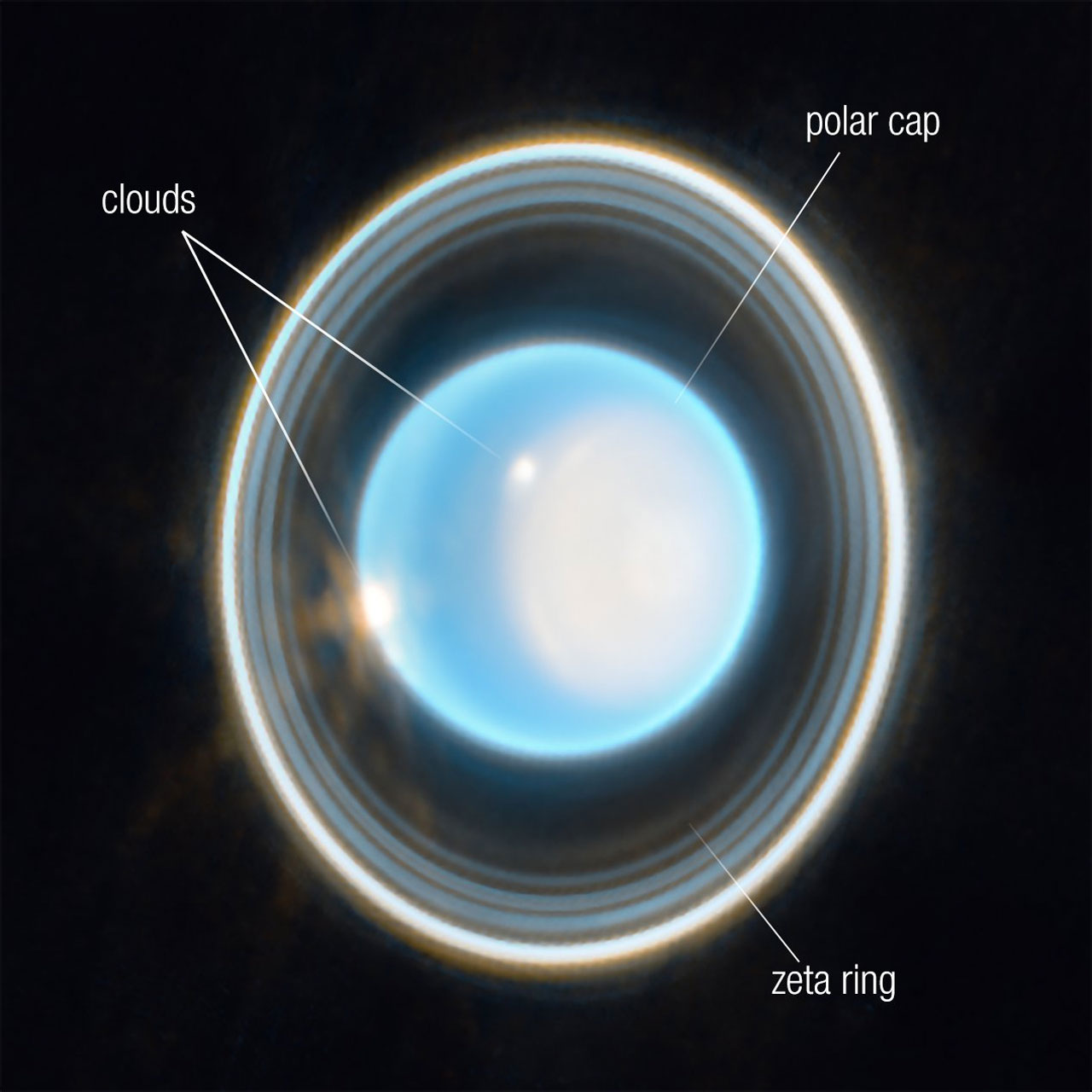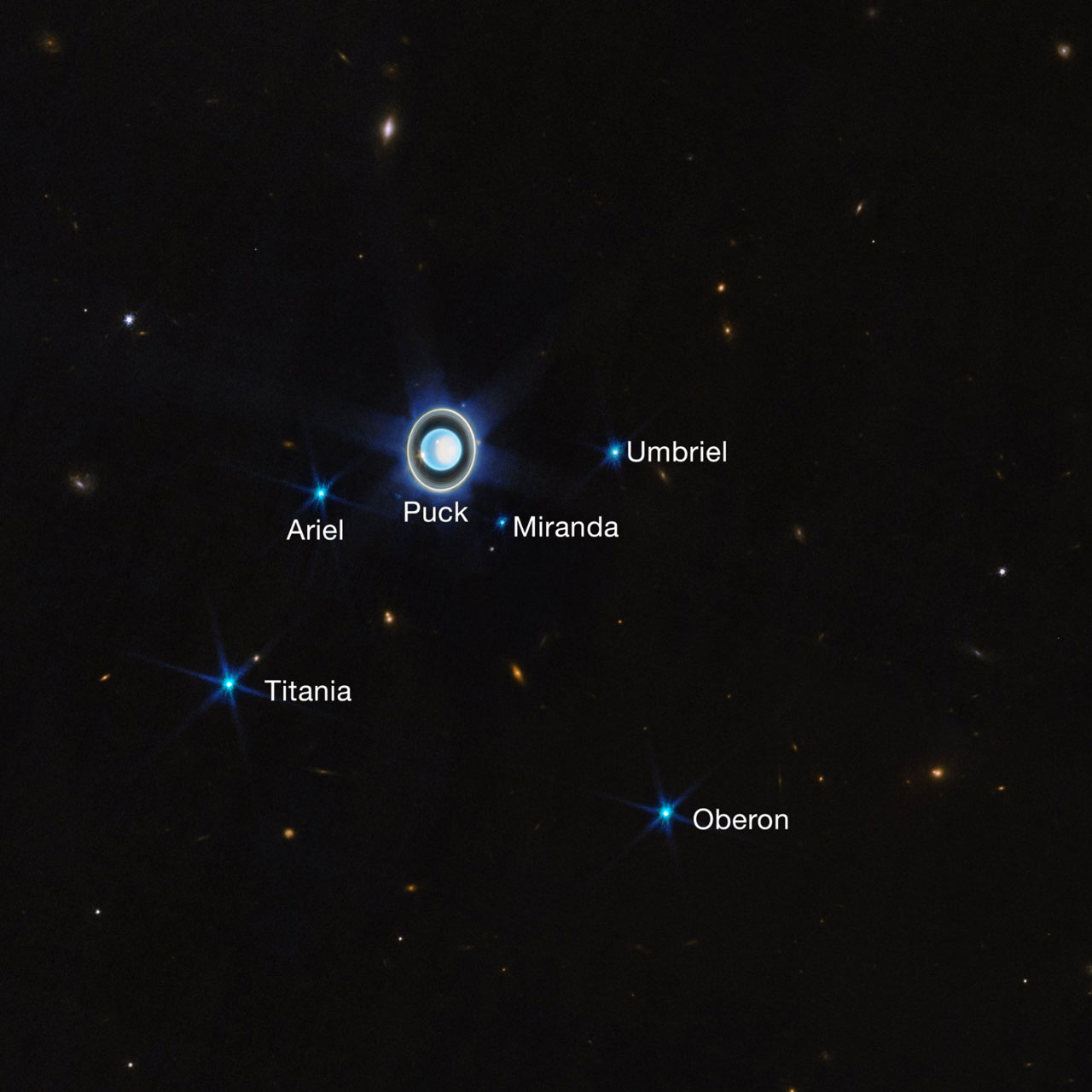The James Webb Space Telescope has allowed us to see the gas giant Uranus in all its details more clearly than ever before.
The seventh planet closest to the Sun in the Solar System UranusTo date, it has only been observed with the Voyager 2 spacecraft and Keck. A planet made of frozen mantle and hydrogen and helium gases will go down in history. James Webb Space Telescope observed by.
Moreover, James Webb shows that the planet is not so inconspicuous in the images we have seen before. the faint rings also made clear. Clouds on the planet and The brightest moons of Uranus was also caught in the lenses of James Webb.
Uranus posed like this:
In this image by James Webb, the bright spots on the planet originate from clouds in the atmosphere. But these dots aren’t the most interesting part of the image, it’s the white area that can be seen in a much larger way.
This white area is the part of the planet that is completely covered in ice. Thanks to James Webb, we can see this area so clearly for the first time in history. The interesting thing is that although this area is visible in direct sunlight, disappears in autumn. Data obtained by James Webb is expected to illuminate this mystery.

The rings we see in the images are from Uranus. ring 13 is showing. But we can only see 11 rings. This is because the other two rings seem to be intertwined as a result of reflecting too much light.

In this photo, however, we cannot see all 27 moons of Uranus. Many of these satellites are very small and reflect so little light that it is difficult to observe. If the 6 satellites we see above are Titania, Oberon, Miranda, Puck, Ariel and Ubriel satellites.
Moreover, according to NASA’s statement, this photo, the product of just 12 minutes of exposure. With longer exposures, it will be possible to obtain much more detailed images and data about Uranus.
RELATED NEWS
NASA Announces the Astronauts It Will Send to the Moon: For the First Time, a Woman and a Black Will Go to the Moon…
Source :
https://www.nasa.gov/feature/goddard/2023/nasa-s-webb-scores-another-ringed-world-with-new-image-of-uranus/
